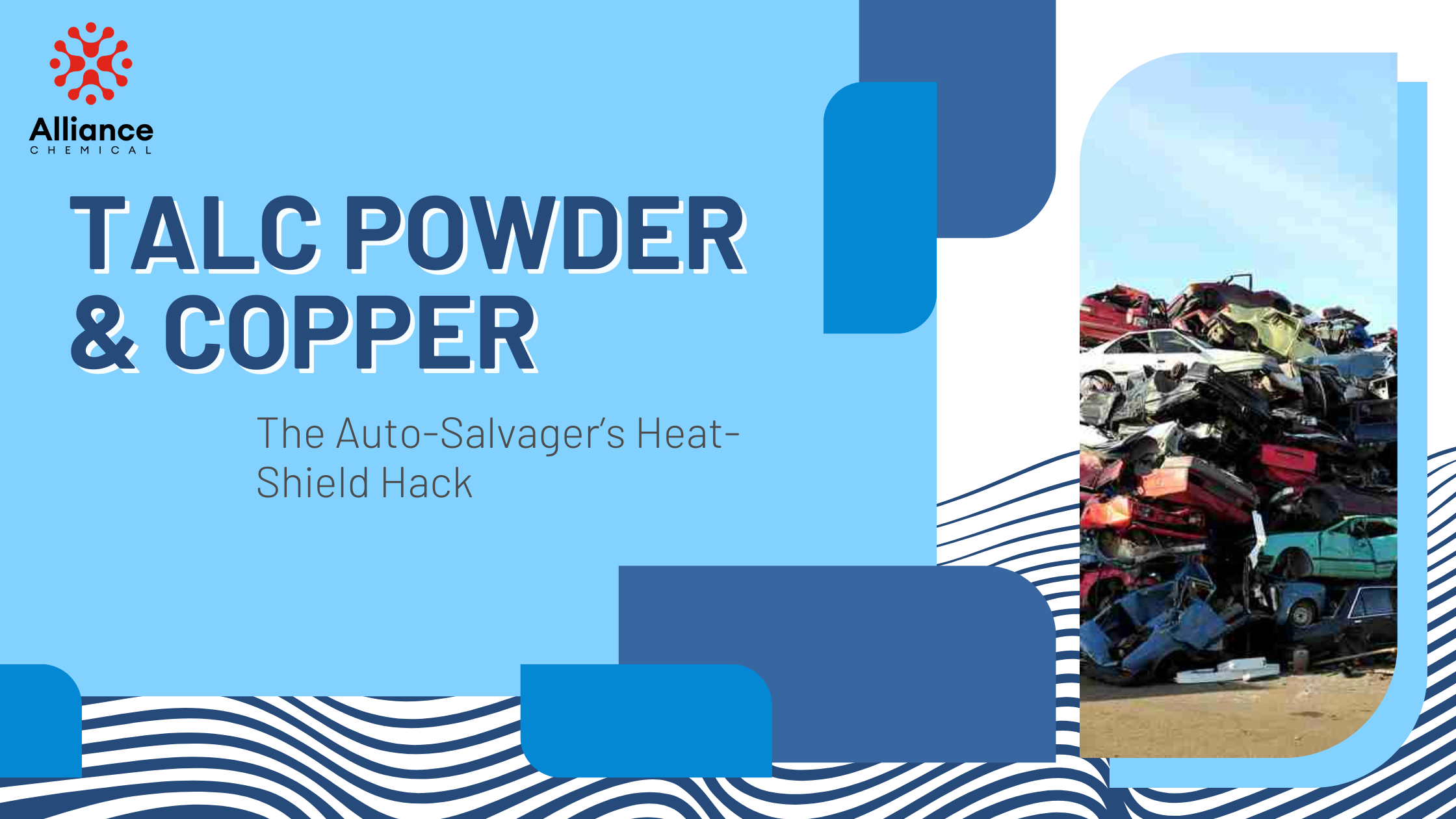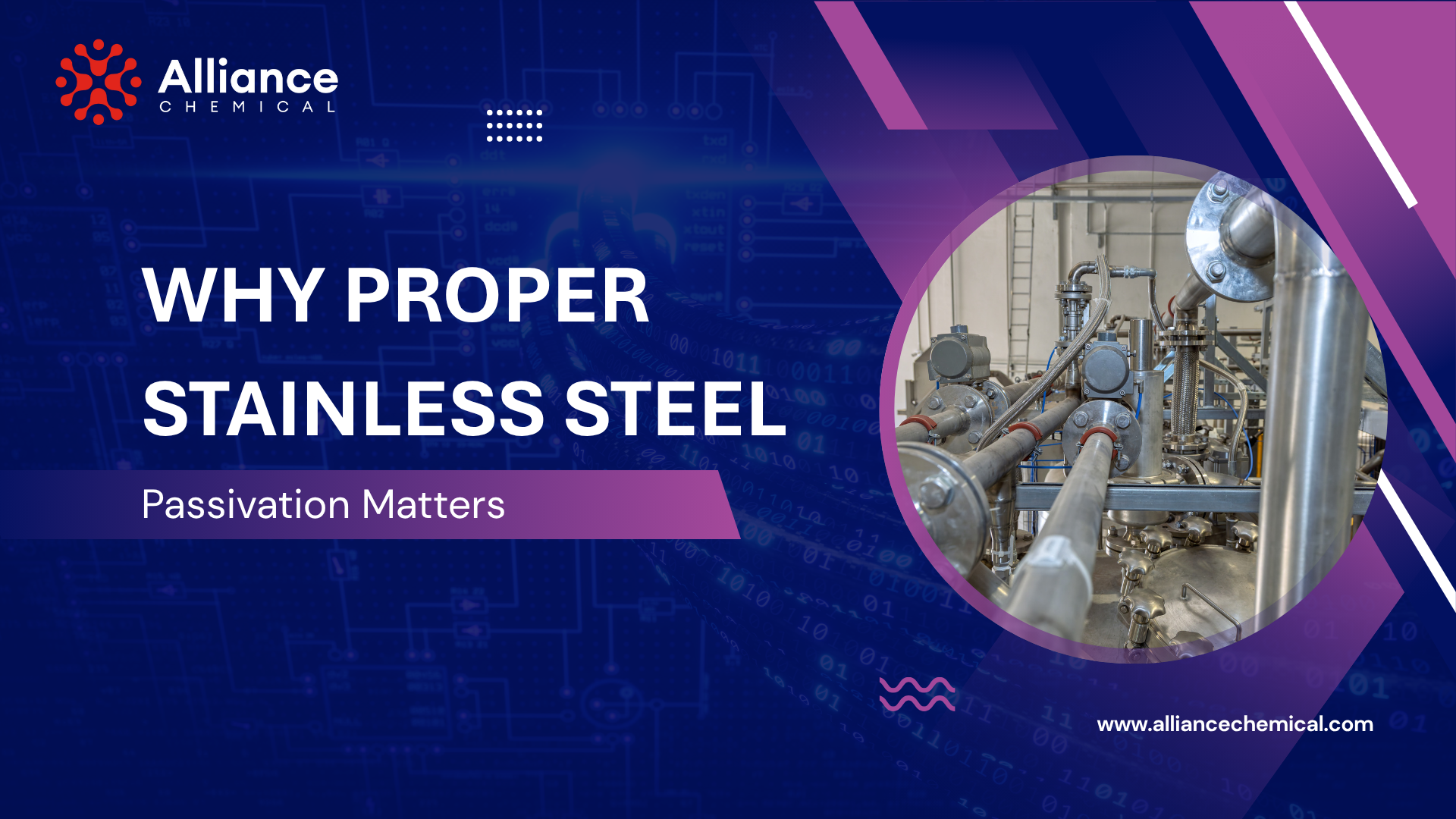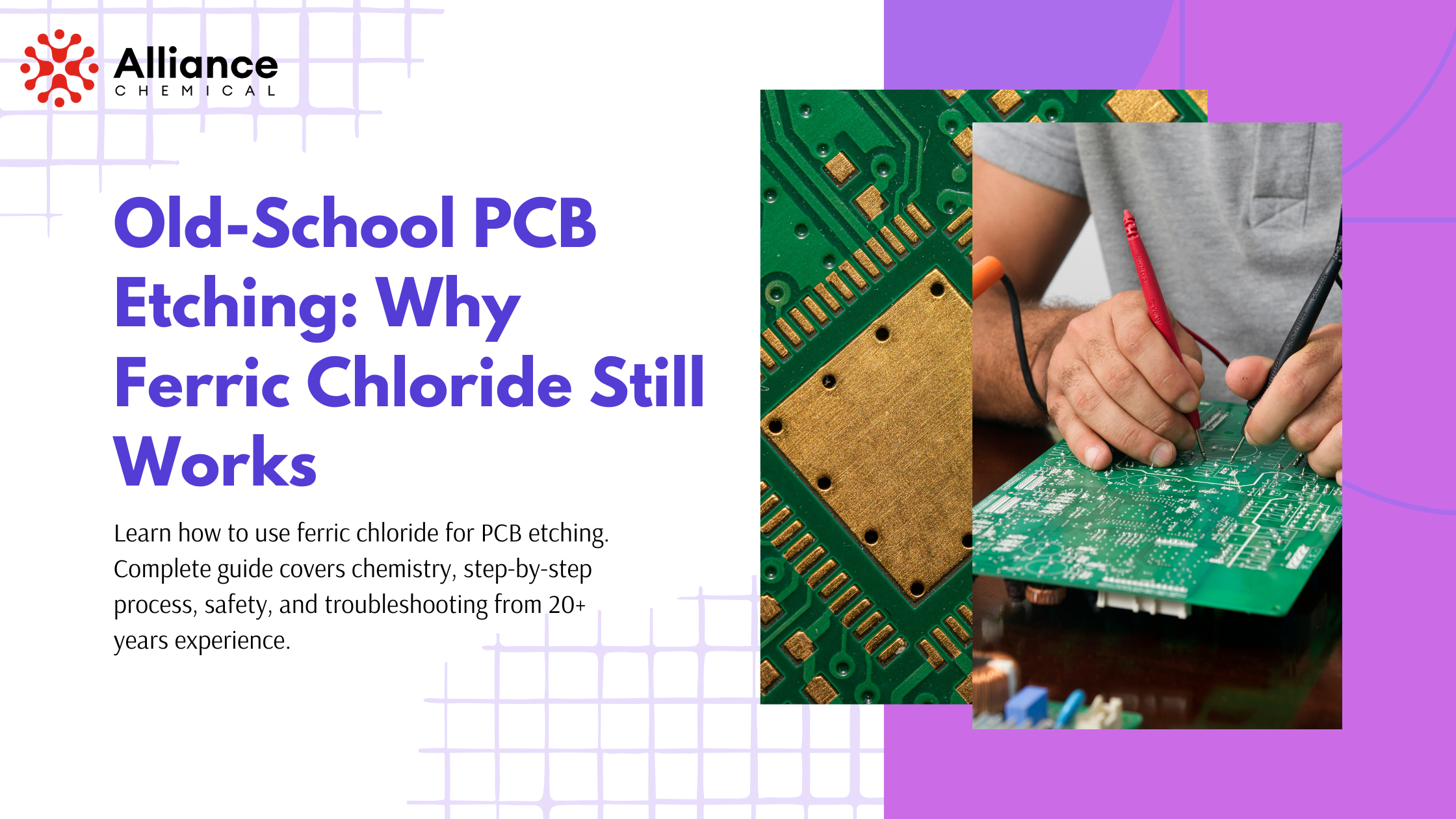
Talc Powder & Copper: The Auto-Salvager’s Heat-Shield Hack
Table of Contents
Summary
💡 Frequently Asked Questions
Find quick answers to common questions about talc powder & copper: the auto-salvager’s heat-shield hack.
Discover how a simple industrial mineral protects copper from torch heat, prevents value loss, and maximizes your scrap payout on every vehicle.
Introduction — Copper Meets Heat in Auto Salvage
In the world of industrial and automotive recycling, profit is measured in pounds and purity. Every day, recyclers skillfully dismantle end-of-life vehicles for their most valuable non-ferrous metals. Among these, copper stands out. Copper wiring, starter and alternator windings, and A/C coils consistently fetch the highest prices—but there's a catch. The metal must be clean, bright, and unoxidized to qualify for top-tier pricing.
Unfortunately, the very tools needed to extract these components—powerful propane torches and induction heaters—are the biggest threat to their value. These tools can generate intense heat, often exceeding 1,000 °C (1,832 °F). In a matter of seconds, this heat causes pristine copper to oxidize, forming a black, sooty layer that instantly downgrades it from "#1 Bright" to lower-value "#2" copper or worse.
For years, seasoned scrappers have relied on an inexpensive but powerful secret weapon: dusting industrial talc powder over copper surfaces before applying heat. The talc creates a thin, thermally resistant barrier that effectively shields the copper from the flame's oxidizing effects. This simple "hack" slashes oxidation, reduces metal loss, and ensures more weight in the #1 Bright category. This article breaks down the science of why talc works, how to use it safely, and the real-world financial benefits it delivers.
The Heat Hazard — Three Ways High Temperatures Kill Copper Value
Uncontrolled heat is the silent thief in a salvage yard. It systematically destroys the value of your copper haul in three critical ways:
-
Oxidation & Discoloration (Grade Loss)
This is the most immediate and costly form of damage. When exposed to high heat and oxygen, copper undergoes a chemical reaction, forming a black layer of cupric oxide. This discoloration is an instant red flag for scrap buyers, dropping your metal from the premium #1 Bright grade to #2 Copper. This single grade drop can slash your payout by 15–30 %. -
Physical Metal Loss (Weight Shrinkage)
It's not just a surface issue. Extreme heat can literally burn away a thin layer of the copper itself, turning valuable metal into worthless slag. While it may seem insignificant, this micro-loss adds up. On a 500 lb haul of wiring harnesses, a mere 2 % loss equals 10 pounds of copper that you can't sell—pure profit vaporized by the torch. -
Extra Cleanup Time & Contamination
Heat-damaged copper requires more processing. Molten plastic insulation, solder, and other contaminants cling stubbornly to oxidized surfaces. This forces you to spend valuable time and resources on secondary cleaning methods like aggressive wire-brushing or, in some cases, hazardous acid baths to strip the metal clean. This extra labor and use of other solvents eats into your workday and your bottom line.
The conclusion is clear: heat is the hidden profit-killer. To protect your earnings, you need an effective thermal barrier. Talc, with a melting point far exceeding torch temperatures and its inert nature, provides that barrier perfectly and affordably.
Talc 101 — Why This Soft Mineral Handles Serious Heat

Talc is a naturally occurring clay mineral, a hydrous magnesium silicate with the chemical formula Mg3Si4O10(OH)2. It’s famous for being the softest mineral on the Mohs scale, yet it possesses a remarkably high melting point, withstanding temperatures over 1,500 °C (2,732 °F). It is one of the most versatile industrial minerals available. This unique combination of softness and extreme heat resistance makes it the ideal heat-shield powder for auto recyclers who need to apply direct flame but want to preserve the copper's value.
Key Properties That Protect Copper
- Low Thermal Conductivity: Talc is an excellent insulator. When dusted onto copper, it dramatically slows the rate at which heat from the torch transfers to the metal's surface, preventing the rapid temperature spike that causes oxidation.
- Plate-Like Particle Structure: Under a microscope, talc particles are tiny, flat platelets (or lamellae). When puffed onto a surface, these platelets overlap like scales, forming a dense, continuous blanket that physically blocks oxygen from reaching the copper.
- Chemically Inert: Talc will not react with copper, aluminum, steel, or any residual flux or insulation varnish on the components. It simply acts as a physical barrier and can be brushed off without leaving any chemical residue.
- Hydrophobic & Non-Stick: Talc naturally repels water and, by extension, molten materials. This "non-stick" quality is a huge advantage. Molten plastic insulation and solder splatter that would normally fuse to the copper instead bead up on the talc layer and peel away cleanly once cooled.
In practice, the application is simple: just apply a light, even coating to the copper sections you need to protect. Allow a moment for the dust to settle, then proceed with your torch or heater. The talc layer absorbs and deflects the initial thermal shock, giving you the critical seconds needed to make your cut while the copper underneath remains bright and clean, not black and burnt.
Real-World Wins — Where Scrappers Are Using Talc

Common Applications for Maximum Payout
Talc's protective properties are valuable across a range of salvage operations:
- Wiring Harnesses: This is a prime use case. Before burning the plastic insulation off a large loom in a drum or with a torch, thoroughly dust the entire bundle with talc. The copper inside will emerge significantly cleaner and brighter.
- AC & Radiator Coils: When using a torch to cut away the aluminum fins from copper tubing, a light dusting of talc on the copper pipes prevents them from turning black, ensuring they remain in the top-grade category.
- Starter and Alternator Tear-Downs: Protecting the dense copper windings is crucial. Apply talc before heating the casing or using a cutter to loosen stubborn steel laminations. The windings will be shielded from incidental heat contact.
- Bus Bar Sections: When dismantling large switchgear or industrial panels, heavy copper bus bars often need to be heated to be separated. A coating of talc prevents heavy scale and oxidation, preserving their high value.
Scrap-yard Math: The Payoff is Clear
Let's run the numbers. As of today, a 500 lb batch of #1 Bright copper might fetch $0.25–$0.35 more per pound than the same batch sold as #2 copper. Preventing a downgrade on that load means an extra $125 to $175 in your pocket. A single 50 lb bag of industrial talc costs just a fraction of that gain and can last for weeks, protecting thousands of dollars' worth of material. The return on investment is immediate and substantial.
Safety & Best Practices When Working With Talc
While industrial talc is a safe and inert material, like any fine powder, it requires proper handling to ensure a safe and efficient work environment.
Quick Safety Checklist
- Ventilation: Always apply talc powder in a well-ventilated area. Working outdoors or under a powerful exhaust fan is ideal to minimize airborne dust.
- Respiratory Protection: When handling or pouring talc in bulk, wear an appropriate dust mask (P95 or N95 rated) to prevent inhalation of fine particulates.
- Eye Protection: Standard safety glasses are essential. They protect your eyes not only from airborne powder but also from the stray sparks and debris generated by cutting and torching.
- Skin Contact: Talc is non-irritating to the skin, but wearing gloves is a good practice to keep hands clean, maintain a firm grip on tools, and simplify cleanup.
- Housekeeping: Be mindful of spills. Talc powder on a concrete or metal floor can be extremely slippery. Sweep or vacuum up any excess powder promptly to prevent slip-and-fall hazards.
Tips for Fast, Clean Application
- Use a Squeeze Bottle: For precise and controlled application, fill an old condiment squeeze bottle or a similar puffer with talc. This allows you to puff a fine, even layer onto the metal with minimal waste. You can find suitable equipment and containers for this purpose.
- Apply Before Cutting: Dust the target area before you begin heating or cutting. Once the part has cooled down completely, a simple tap or quick pass with a brush will dislodge the powder residue.
- Keep it Dry: Store your talc bags in a dry location, off the ground if possible. Talc is hygroscopic, meaning it can absorb moisture from the air, which will cause it to clump and become difficult to apply.
- Label Clearly: Ensure your talc container is clearly labeled to prevent it from being mistaken for other shop powders.
Frequently Asked Questions
Is talc safe on all grades of copper?
Absolutely. Talc is chemically inert and non-reactive. It does not stain, corrode, or contaminate the copper. After a quick brush-off, it leaves no residue, ensuring that scrapyards and buyers will accept your talc-treated copper without issue or downgrades.
Will talc extinguish sparks or a fire?
No. It is crucial to understand that talc is a heat insulator, not a fire suppressant. It will not put out a flame or extinguish sparks. You must continue to follow all standard fire-safety protocols and have appropriate fire-extinguishing equipment on hand when torching.
How much talc do I need per car?
Usage varies with the extent of copper being recovered, but most salvage yards find that 1–2 pounds of powder is sufficient to process all the primary copper components (harnesses, coils, starters) from an average mid-size vehicle.
Can I just use baby powder instead?
It is strongly advised not to. Cosmetic-grade baby powder often contains added oils, fragrances, cornstarch, and other organic binders. When heated, these additives can burn, smoke, and create a sticky, gummy residue that is difficult to remove and can actually contaminate the copper. For best results, always use pure, asbestos-free industrial talc.
Can I reuse swept-up talc?
This is not recommended. Once talc has been used or swept from the floor, it's likely contaminated with dirt, metal shavings, slag, or bits of burnt insulation. Reusing it risks applying these contaminants back onto your valuable copper. For the low cost of talc, it's always best to use fresh, clean powder.
Ready to Keep Your Copper Bright?
Stop letting heat burn away your profits. Adding industrial talc to your workflow is one of the easiest and most cost-effective investments you can make to boost your scrap copper payouts. As a trusted chemical supplier with deep roots in the industrial sector, Alliance Chemical is here to help. Find out more about us and our commitment to quality.
We stock high-purity, asbestos-free industrial talc in sizes that fit your operation, from 50-lb bags for smaller shops to 2,000-lb supersacks for large-scale recycling facilities. Protect your assets and get paid what you deserve on every load.









